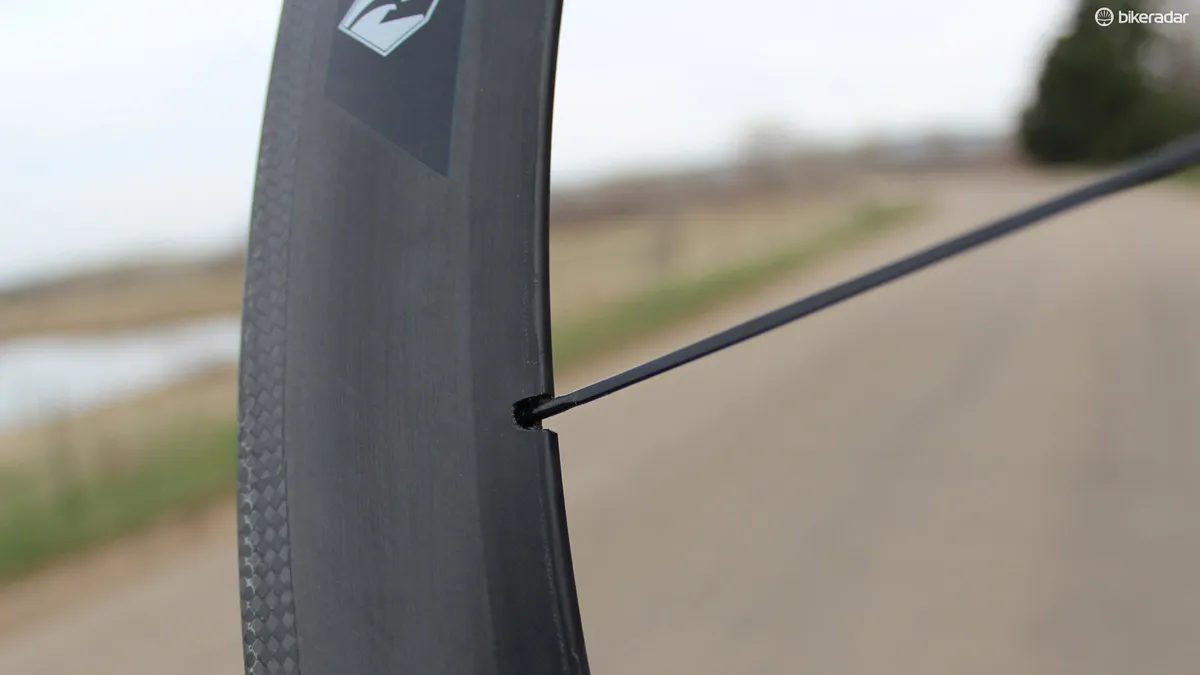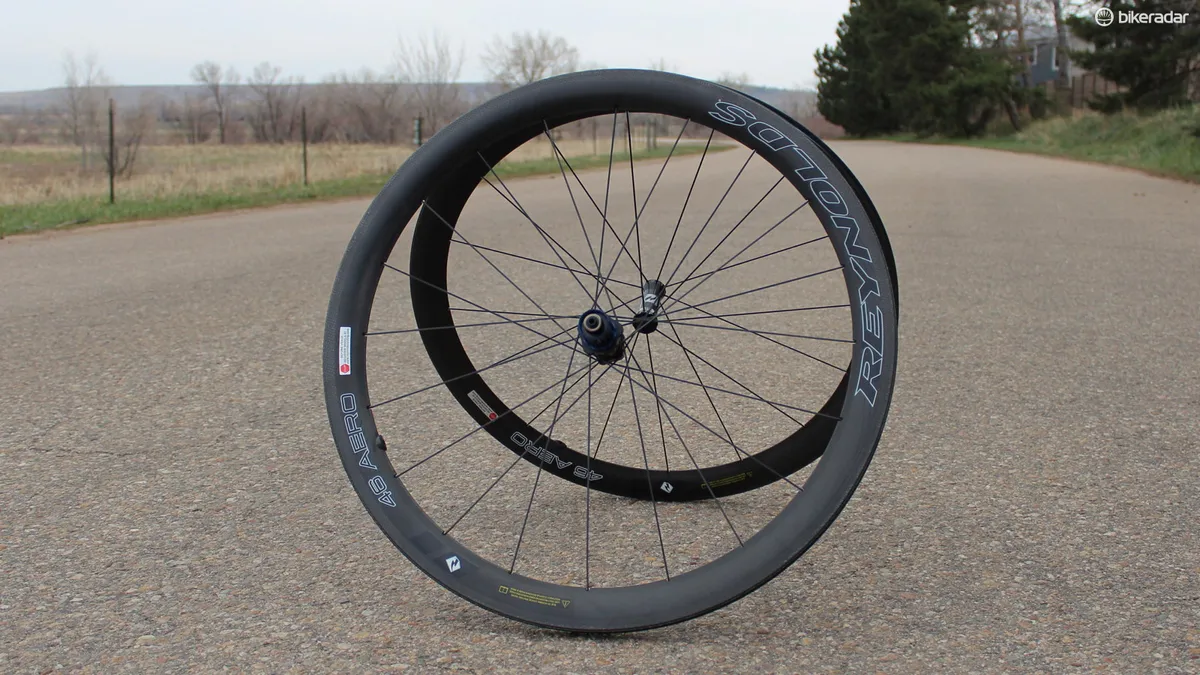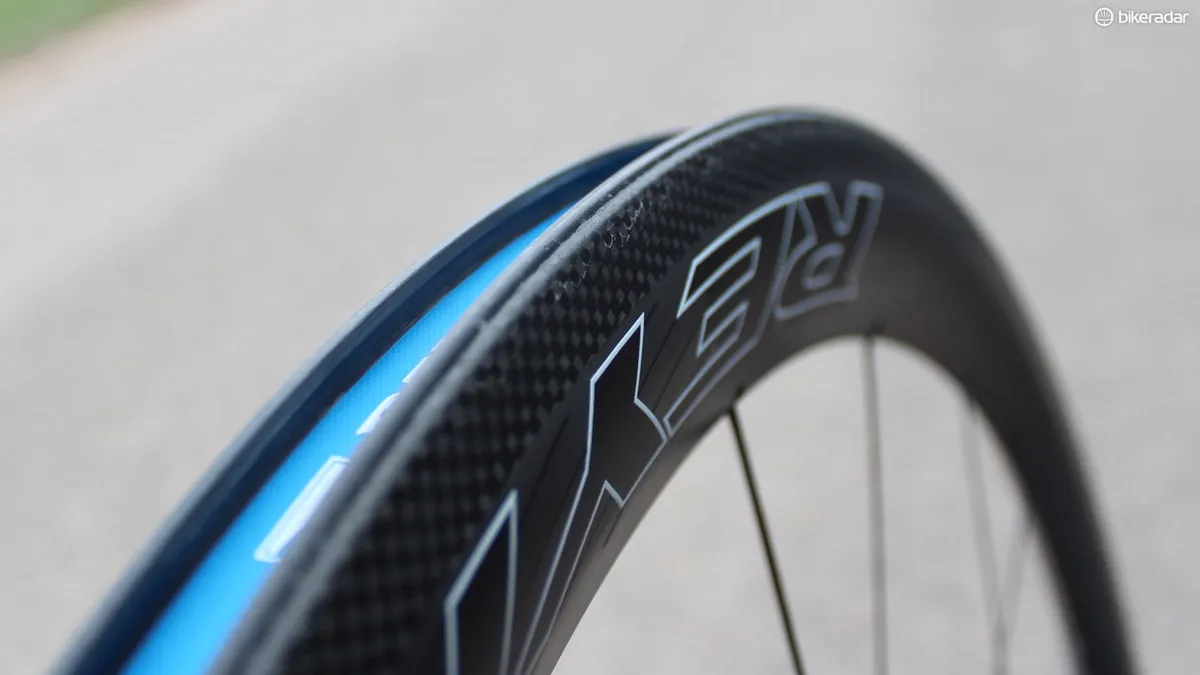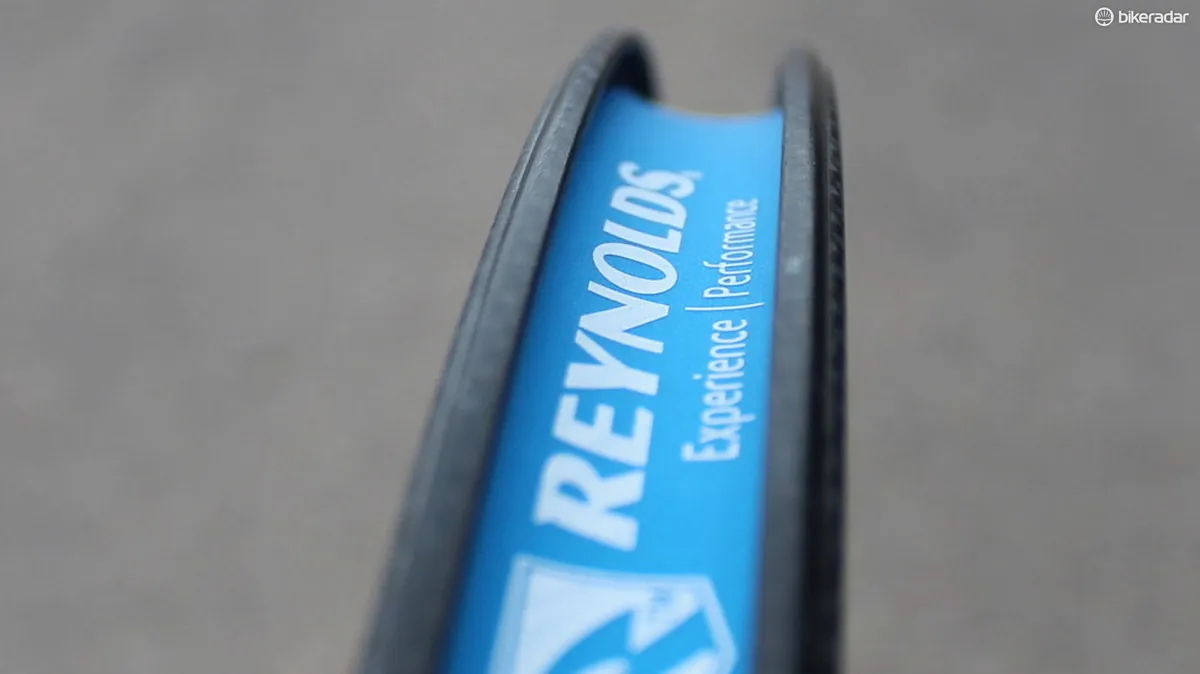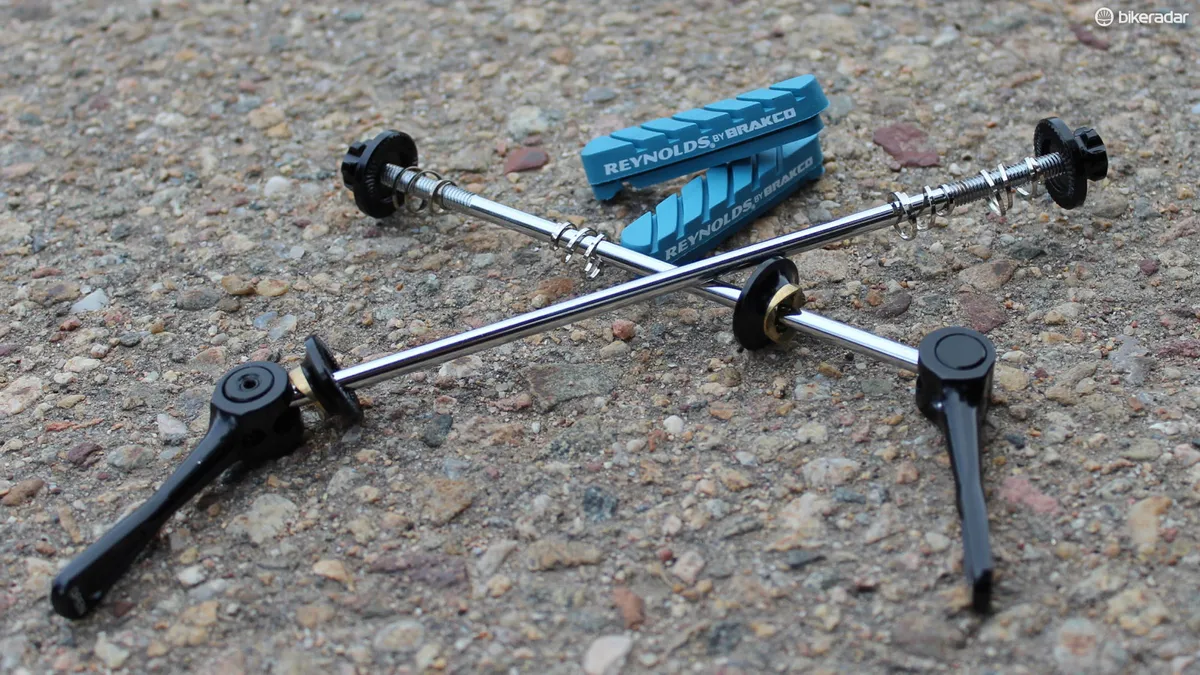While virtually all other companies with aero wheels have moved to a snub-nosed design at the spoke bed, Reynolds is holding the line with a sharply triangulated rim profile. The 46 Aero got its own, ground-up design using in-house CFD work and wind-tunnel testing, however, with the dual goals of speed and stability.
Now, the new 46 Aero rim stays broad from the 26.2mm width at the bead hooks through the mid point, then slices down to a sharp point at the spoke bed.
The company’s aero guru Paul Lew contends that this design is still faster in most situations than a rim of the same width and height that comes down to a rounded edge. The primary reason companies such as Zipp have moved to the snub nose is for less dramatic sheer in crosswind gusts. Lew asserts that while this snub-nose design can reduce quick shutter, it comes at the price of higher side forces. The snub-nose design, he says, is high drag, high lift, while his more traditional airfoil is low drag, low lift.
In our testing over a thousand miles under three riders, we found the wheels slice through the wind nicely when paired with 25 or 26mm clinchers and, at 1,530g for the set, they climb just fine, too.
There are also 58, 72 and 90 Aero models – named for the depth of the rim in mm – in clincher and in tubular.
In the wind: Some shudder, but with light force
Bombing down Colorado mountain roads, we felt comfortable on windy days. The wheels do seem a bit twitchier than, say a Zipp 303 (which has a 45mm rim but is 28.5mm at its widest point), but with less side force. Coming around a downhill corner and getting hit with a side wind that quickly dissipates as you round another bend, for example, the front wheel would want to turn just a hair then ‘release’ as the wind dropped. But the pressure was more like a gentle but quick tapping on the very front of the wheels than a heavier but steadier push that could get with a 303 or something of similar shape.

The rubber valve stopper eliminates the rattle you can get with other deep rims
On the flat and up hills: fast and agile
It’s impossible to accurately gauge the aero speed of a wheelset by feel, but based on a thousand or so miles under three riders, we can definitely say these are on a level with comparable Zipp and Enve wheels for pure pace.
The 46 is decently light – on par with the Zipp 303 – but some test riders said they felt lighter because the lateral stiffness is immense. As a result, climbing, acceleration and cornering are all given a boost, especially if you’re a bigger rider or a sprinter.
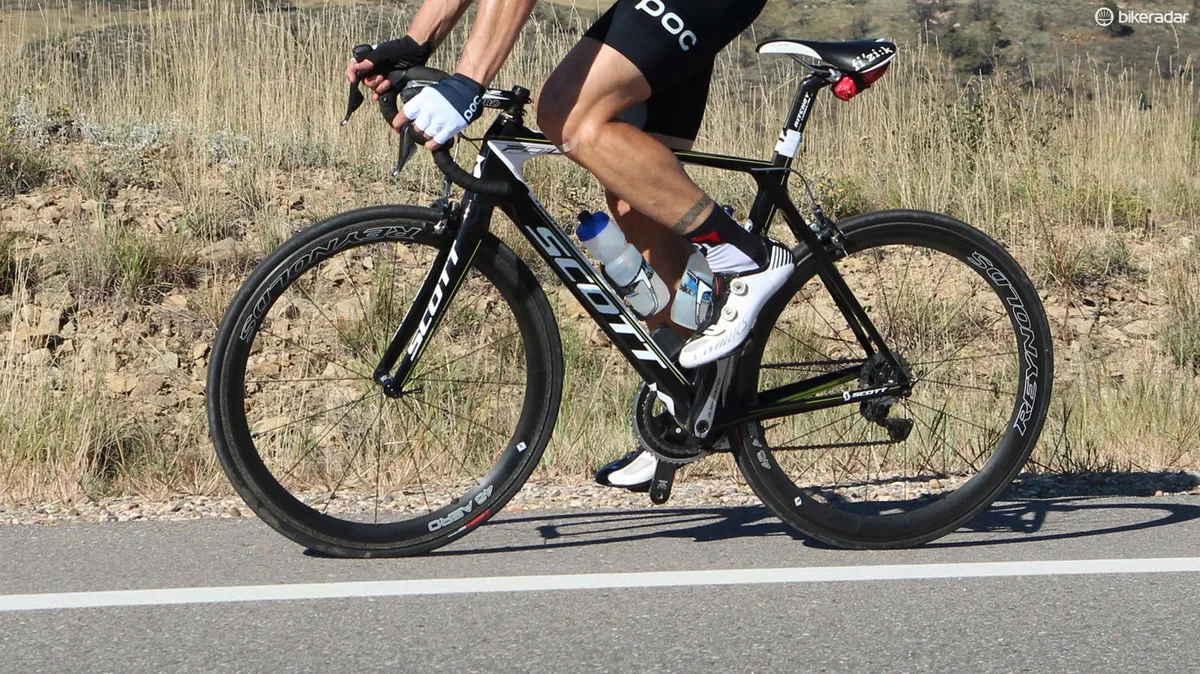
The wheels are easy to accelerate, on the flat or on hills
Hubs: a DT Swiss/Reynolds hybrid
Reynolds uses a DT Swiss 240 straight-pull rear hub, but with a modified DT Swiss 180 driver. The wheels don't get the ceramic bearings of the standard DT Swiss 180 hubs, however. But the straight-pull spoke configuration and stiff rims conspire to produce taut hoops and a lively ride.
We experienced a little play (<1mm) in the cassette body that we couldn't eliminate, but it didn't affect shifting or anything else. It was just a little disconcerting when changing cassettes. Otherwise the hub performance was the smooth and dependable performance we've come to expect from DT.
Brake quality: great in dry, moderate conditions; less so in the wet and on extreme descents
We tested first with Reynolds’ older blue Cyro pad, then the new Cyro-Blue Power pad. Both work fine in normal conditions, but the latter works better under extreme braking or wet conditions. For example, two 185lb / 84kg test riders in the US could get the older pads to squeal fairly easily on steep, hairpin descents, but the newer pads would mostly give a pulsating 'videogame' noise when braking hard.
Only under extended hard braking – such as stopping as fast as possible from 55 and 60mph on steep mountain roads – would the brakes start chirping. Repeated hard braking would worsen the noise; when the roads flattened out and braking was less intense, the squealing went away. However, the braking power and modulation remained steady, regardless of the audio feedback.
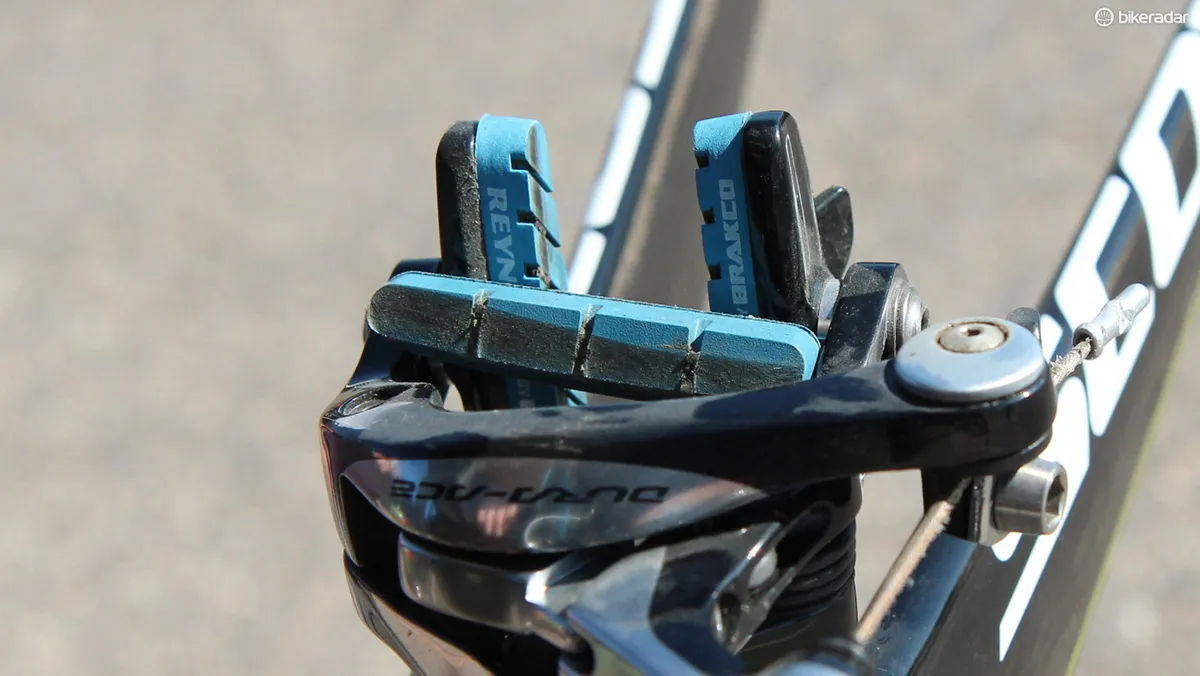
The new Cryo-Blue Power Pads (in the holder) are better than the last version, but still not ideal in all conditions
In the UK, wet braking proved a bit of a challenge, and there was a slight delay before engagement and reduction of power.
Reynolds recommends that riders who live or ride in the mountains to regularly clean the rims with acetone and scrub the brake pads with a fine grit sand paper.
Bottom line: 90% of Zipp 303, in performance (including braking) and in price
Pricing of course depends on where you live, and what is on sale. But the Reynolds 46 Aero wheelset is typically about 10% less than a Zipp 303. Weight, rim depth and ride quality are similar between the two sets. The snub-nose vs pointed-rim philosophy difference comes through in crosswind situations, but we can't definitively say which is better; they are just different. The 46 Aero gets less side pressure but with more twitchiness; the 303 gets more side force but with a little more stability. If Reynolds could sort out its wet-weather braking and high-pressure squealing the way Zipp has, that could really tip the scales.
